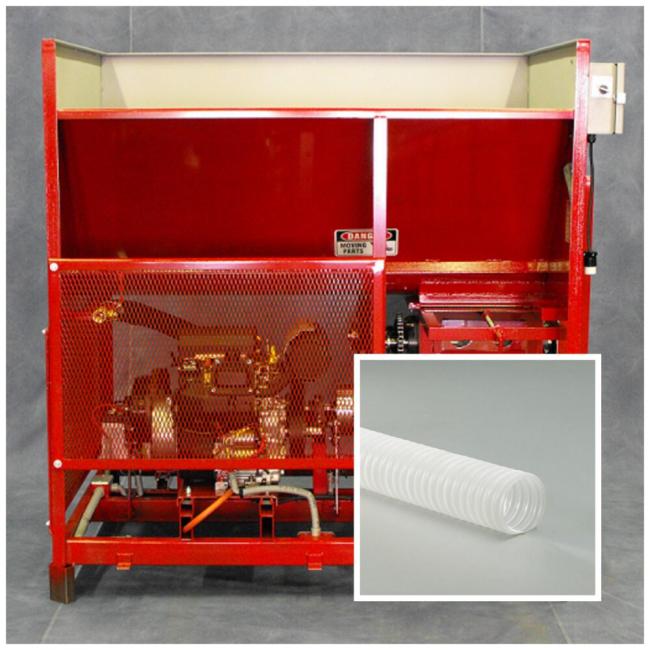Maximizing Output: Using Your Insulation Blowing Machine To Get 3,500 lbs/hr

It is not a myth. You can actually achieve the labeled capacity of 3,500 pounds of insulation per hour that most machines are equipped with if you know the tricks of the trade.
No matter which type of machine you use – gas, diesel, hydraulic or electric – you can still achieve high-volume output consistently by striking the right balance between air pressure and hose set-up. Of course, regular maintenance of your machine also plays a role.
Heat Seal Equipment Ltd. provides state-of-the-art insulation blowing machines in Ajax, Ontario that deliver what they promise: smooth, continuous airflow.
In this blog, we will show you how you can maximize the real-world performance of your machine and prevent sluggish output on the job.
How To Achieve Maximum Output With Your Insulation Blowing Machine?
To achieve the highest limit of manufacturer-prescribed insulation blowing machine output, you must pay special attention to the following factors:
-
The airflow of your machine
At the heart of your insulation blower lies a sophisticated airflow system that is powered by a compressor. The primary purpose of this compressor is to generate the volume and pressure insulation materials need to move from the hopper to the hose and finally, to the site of application.
If this pressure is too low, you can expect the material to move sluggishly. Conversely, if the pressure is too high, you will end up with over-aerated material that will cause product wastage as well as dusty blowback.
For high-output machines, you need to maintain consistent CFM to ensure steady airflow. Keeping your machine’s air filters clean, hose connections tight, and belt tension right can help you achieve maximum output.
-
Hose size and length
A less often talked about but critical aspect of an insulation blower’s performance is the size and length of the hose you use.
If you use hoses wider than 3 inches, you can move a greater volume of material with less resistance. This is perfect for long runs that take place in spots such as the attic.
On the flipside, if you use a narrow hose of about 2.5 inches, you can easily navigate tighter distances or spots where maneuverability takes center stage over material volume. They are perfect for short-distance runs.
Whether your project demands a wide and long or a narrow and short hose, keeping it bend and kink-free is important as they can increase resistance and decrease throughput by about 10%-20%. So make sure you keep the hose as straight as possible. Check it regularly for factors that could disrupt airflow, too.
-
Airlock exhauster
Think of the airlock exhauster as the command center of your insulation blowing machine. From metering insulation to pressurizing airflow and ensuring consistent delivery of material, it is responsible for a ton of things.
To maintain even pressure across the entire cycle and maximize throughput, you must ensure your machine’s airlock chamber is free of compacted debris. You must also inspect all seals regularly as even a single leak can lead to a significant drop in pressure and efficiency. Lastly, you should lubricate and clean all moving components of the exhauster as per the manufacturer’s guidelines to maintain reliable performance.
-
Maintenance practices
When subjected to neglect, an insulation blowing machine loses its capacity to perform at its peak. That is why you must make maintenance a priority.
Before every job, make sure you check the belts and pulleys for signs of wear. If any leftover material is found in the machine’s hopper or airlock, clean it out immediately. Lastly, make sure you test the air pressure and flow before you start working in earnest.
Conclusion
You do not need luck by your side to achieve the coveted number of 3,500 lbs/hr. All you need is the right airflow, hoses, and maintenance practices. And, of course, the right insulation blowing machine that actually delivers what it claims to.
Heat Seal Equipment Ltd. provides an extensive range of insulation blowers to contractors across Ajax, Ontario. Contact us to get systems that deliver powerful and professional results that match their ratings.
FAQs
Do ambient temperature and humidity affect an insulation blowing machine’s performance?
In some ways, yes. Cold or damp weather can make insulation material heavier and harder to aerate, which in turn can reduce the output generated by your machine.
What is the difference between a single and a dual airlock exhauster?
The major difference between the two lies in the airflow they are able to maintain. Dual airlock exhausters maintain a steadier flow with minimal pressure drops.
Can the same hose set-up be used for all insulation materials?
No. If you are using dense materials like fiberglass, use shorter and wider hoses to maintain clog-free flow. The converse is true for lighter materials.





